How to arrange it correctly?
In many apartments of the Khrushchev buildings, a storage room was provided. It usually does not make sense to attach this part to the room, therefore, unnecessary and rarely used things, stocks of food and household chemicals, and out-of-season clothes are stored in the pantry.
The most logical option if you already have pantry - use it as a wardrobe!
Benefits of a closet in the pantry:
- do not have to "bite off" part of the living space;
- the walls have already been erected and the door has been installed;
- the light is brought into the room.
The only problem - the utility room is not always convenient - most often in the corner of the living room.
You can choose the location yourself if there is no storage room, but you are ready to sacrifice part of the bedroom: this is where it is most logical to store clothes. In this case, you will have to build walls from scratch, come up with something with a door, and carry out lighting. And the bedroom itself will become smaller, which is not permissible in every apartment.
Use a ready-made room or build it yourself - check that the room meets the requirements:
- The distance between the walls is at least 1.5-1.6 m. Thus, there will be enough space for moving.
- High quality ventilation. If you do not want your clothes to suffocate and an unpleasant smell to appear, consider this nuance.
- Adequate lighting. Although the space will remain economic, good light is needed here.
What kind of layout is right?
There are 5 types of dressing room layouts:
- Linear. The storage system is built along one wall.
- Corner. Drawers and shelves occupy 2 walls, they are placed in an L-shape.
- Double row. Parallel placement of shelves on 2 walls.
- U-shaped. Drawers in 2 rows, connected along one wall.
- Rectangular. The storage system takes up the entire space, including the mezzanine above the door.
Since the Khrushchev is small, only the first 2 methods of organization can be used in it. Consider the features of each.
Linear
Direct planning is the simplest and most inexpensive. Since the shelves, crossbars, drawers are located in one row, there is free access to the corners. You can hang a mirror opposite the door to make it more comfortable to pick up outfits.
The disadvantages include a small capacity, but if no more than 2 people live in the apartment and there are not a lot of things, a linear dressing room is ideal.
L-shaped
The first drawback implies the design itself: in the corner you will have to think over a way to dock the storage system. But no matter how hard you try, the corner will still remain difficult to access and will be inconvenient to store in it.
But the angular structure is more spacious, designed to contain 1.5-2 times the volume of a direct wardrobe.
What to consider when choosing a filling?
Standard filling options include:
- Barbells for clothes. Suitable for storing clothes on a hanger.
- Open shelves. They place clothes in piles, accessories, bags, boxes.
- Drawers. Underwear, rows of clothes are stored.
Advice! The best way to store clothes in small walk-in closets is vertical. It offers compact folding of things and storage in rows in drawers. Thus, less space is consumed, and order is maintained longer.
Before designing a dressing room, you should choose a storage system:
Hull
The main advantage of the modular system made of laminated chipboard is the price. It will cost so inexpensively and is quite suitable for budget projects. The texture and color of the laminated film can be absolutely any: from the usual white to rich dark wood.
Only one minus: bulkiness. Because walls and shelves made of chipboard do not let light through, the structure looks massive, especially in a dark color. Although chipboard is considered modular, it is almost impossible to remake it after installation - at most, move the shelf in height.
Mesh
The first plus is that it is made of metal, which means that such a product will not be demolished. If chipboard can swell from moisture, then the metal will serve for many years without any complaints. The second advantage is high light and air transmission capacity. The mesh does not interfere with air circulation and does not block the light. For the same reason, the design looks compact.
And the last advantage is mobility. You can change the appearance of the dressing room at least every season - outweigh the shelves, remove the extra ones, add the missing ones. Don't be afraid to make mistakes when designing - you can fix everything later.
Wireframe
A compromise between the first two options - it will cost less than mesh, it looks more compact than chipboard. The main difference is the presence of side racks, to which the filling elements are attached. As in the mesh, you can change the design yourself, outweighing the shelves or replacing individual parts.
The number of rods, shelves, boxes is selected individually. To avoid mistakes in calculations, follow the advice of the designers:
- The height of the boom depends on what will be stored on it. 150-160 cm for long clothes (dress, coat), 80-90 cm for short (shirt, blouse). For trousers, if there are many of them, a separate section of 60-70 cm is allocated.
- It is not necessary to allocate a separate space for shoe storage... Ditching the bottom shelf and placing your shoes directly on the floor will save room space and budget.
- There should be a lot of boxes. The more clothes that are not stored on the hangers, the more drawers should be. In them, unlike the shelves, it is much easier to keep order.
- The division into sectors will make the dressing room more ergonomic. Divide by functionality: outerwear, casual, home, festive, seasonal.
Lighting and ventilation recommendations
There are usually no windows and outlets to ventilation ducts in pantries, so if you do not want a musty smell and high humidity, follow 3 simple steps:
- Lattice above the door. A through hole is cut into the next room and an ordinary decorative grill is placed, or a forced ventilation system.
- The gap under the door. Do not install the sill, leave a small (~ 1.5 cm) gap for air to escape.
- Warm floor. Heating will help dry the air and avoid moisture stagnation.
Lighting depends on the size of the dressing room and storage system. For cabinets made of wood or chipboard, more light is needed: after all, the shelves do not let it through. It is advisable to think over the lighting at 2 levels: under the ceiling and in the center vertically. The mesh transmits light and only ceiling lighting is sufficient.
It is not necessary to install one pendant chandelier with a lampshade; it is better to give preference to compact and more modern solutions: spots, lamps on the bus. To make the lamps shine on the cabinet, and not on the floor, look for swivel models with directional adjustment of the luminous flux.
What to do with the door?
The last nuance to be solved - a door... You should not leave without it, because a lot of things will create unnecessary noise. There are 4 options for the design of the opening:
- Swing door.It should open outward. The disadvantage of the solution is that it requires a lot of space when opening, which is not always possible to highlight in the Khrushchev. Plus - the surface of the door can be used for storage by attaching hooks or organizers to it from the side of the pantry.
- Sliding door... The main advantage is the minimum use of the usable opening space. Sliding doors can be compartment or barn, select according to your interior.
- Folding door. It looks like a sliding one, but when opened, it does not slide out onto the wall, but folds into 2-3 layers. The most compact option possible.
- Curtain. The advantage of the curtain is in air permeability (plus ventilation) and low cost. Minus - not all interiors will be appropriate.
Remember: the smaller the area of the room, the better you need to think over its filling: a small dressing room should be ergonomic and comfortable to use.

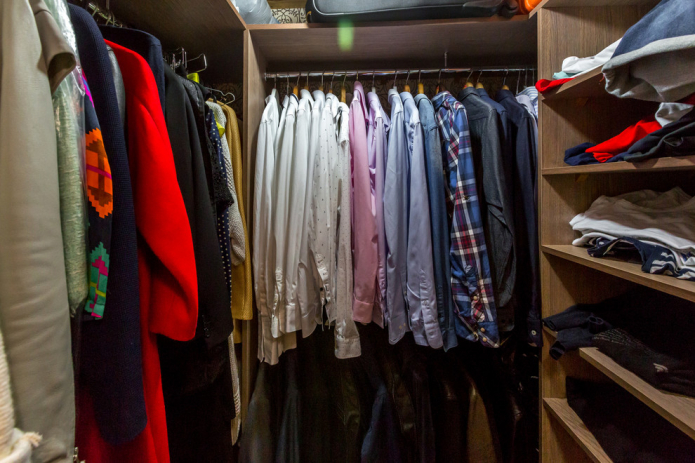
 10 practical tips for arranging a small kitchen in the country
10 practical tips for arranging a small kitchen in the country
 12 simple ideas for a small garden that will make it visually spacious
12 simple ideas for a small garden that will make it visually spacious
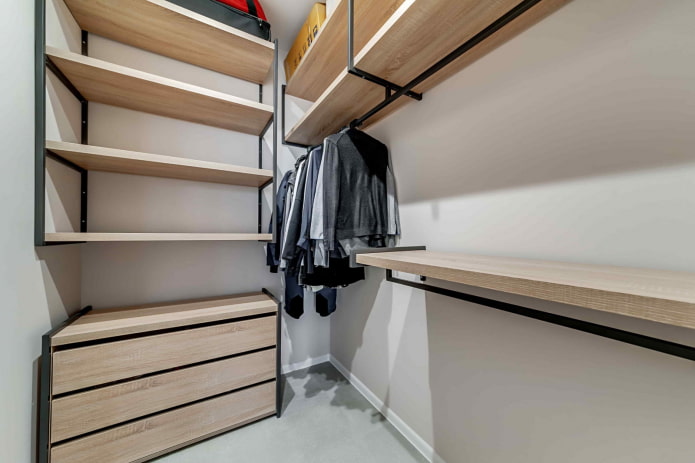

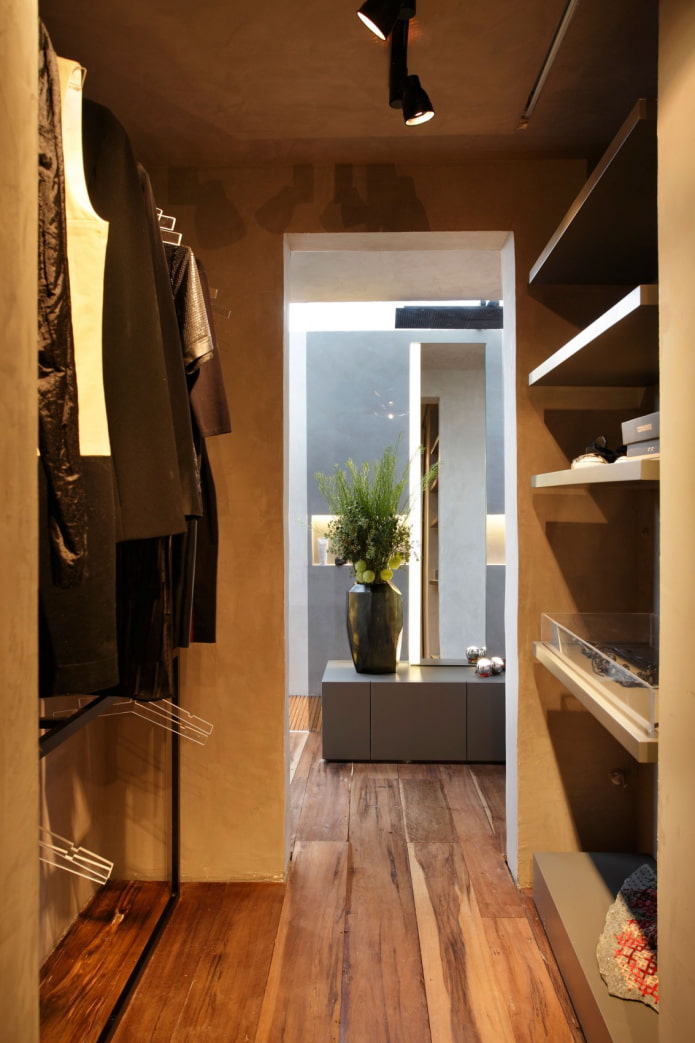

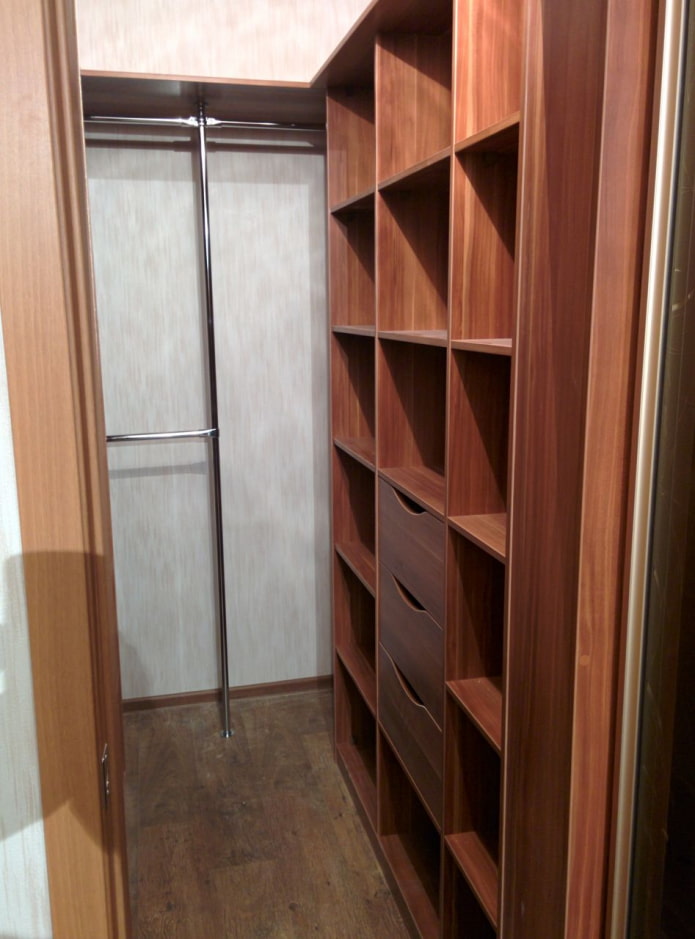
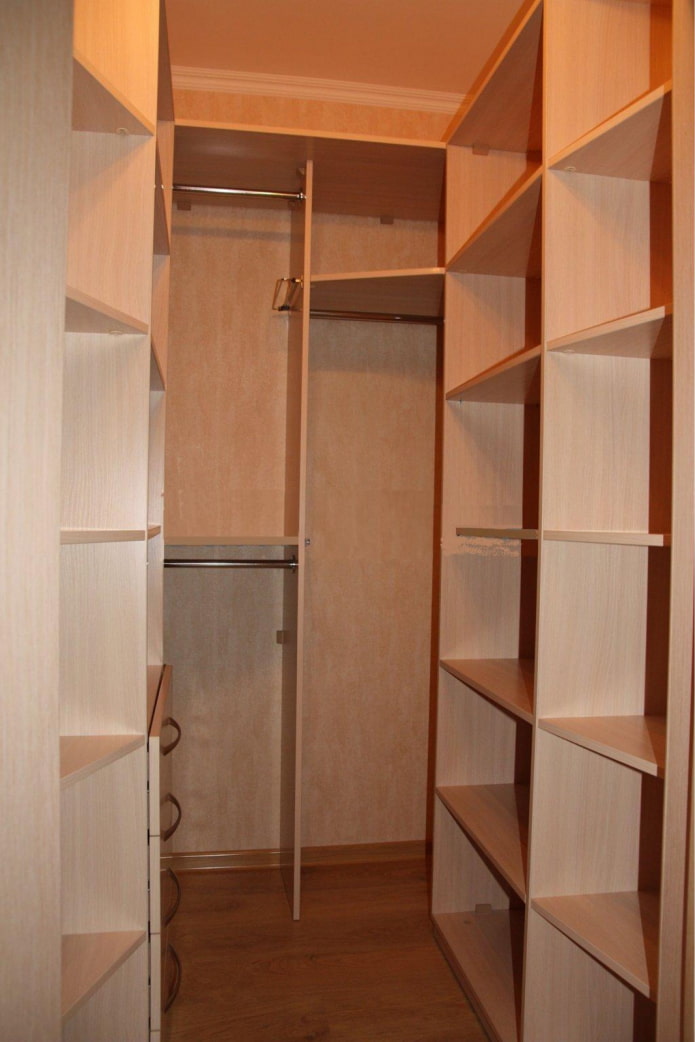
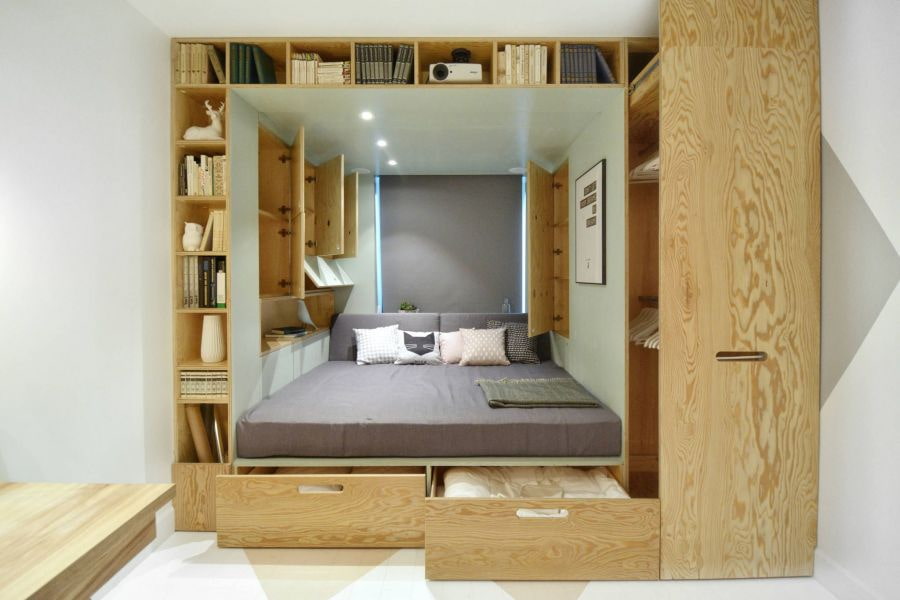
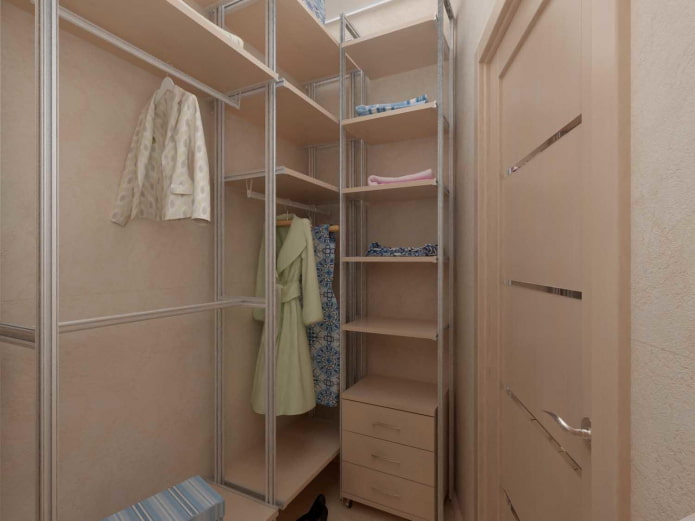
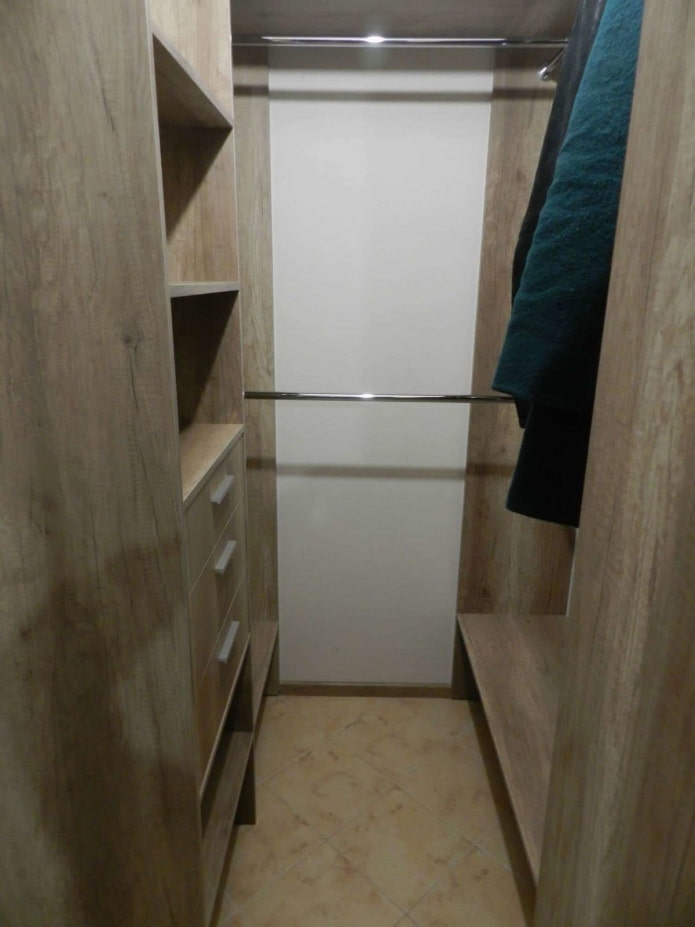


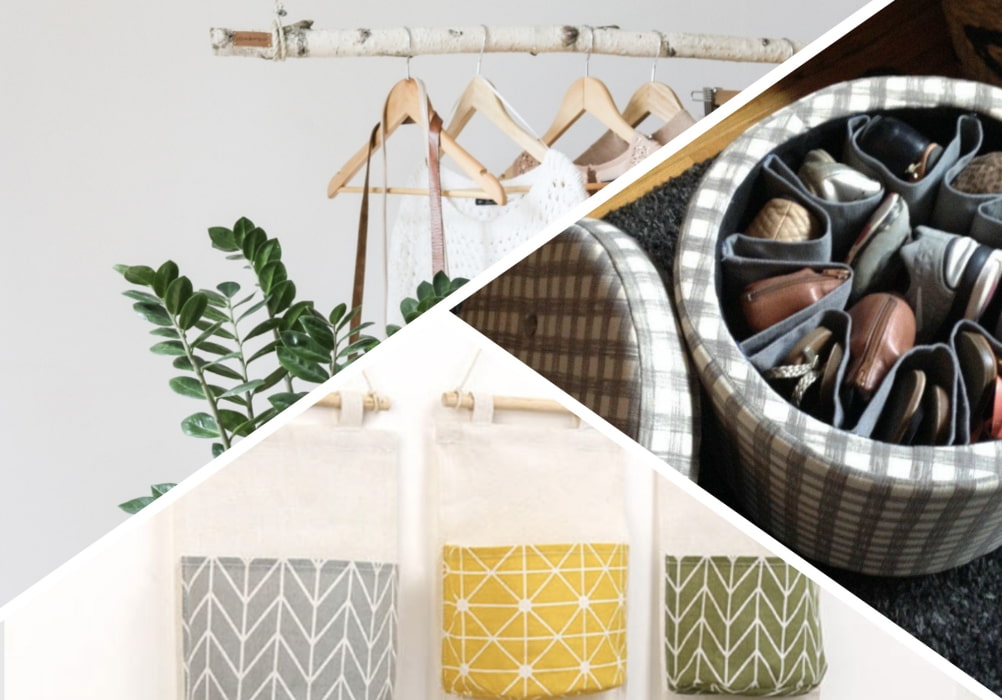
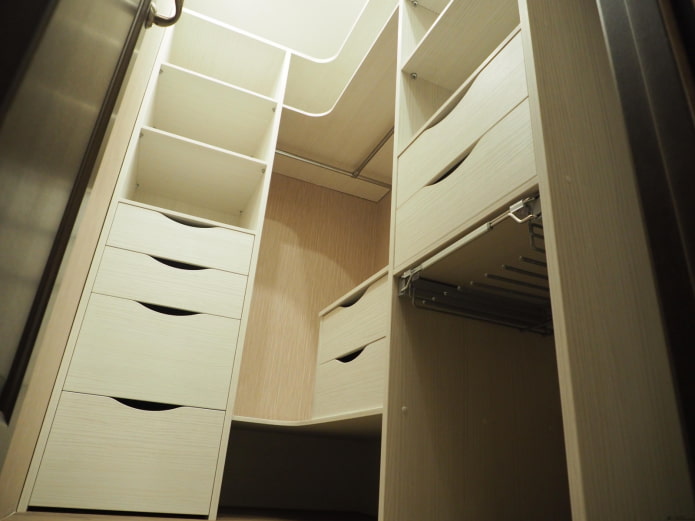
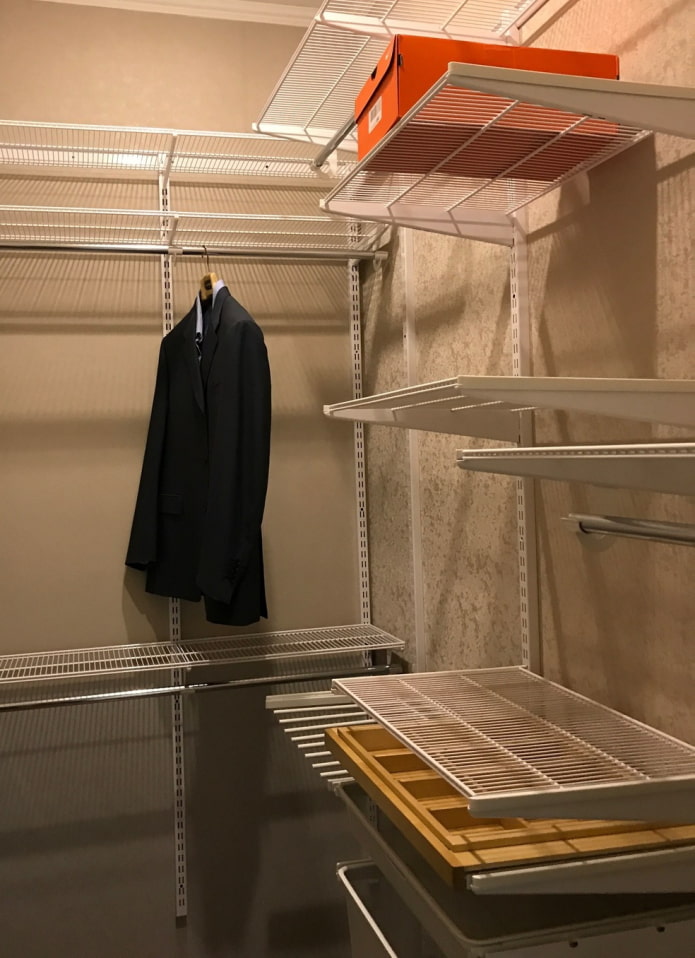
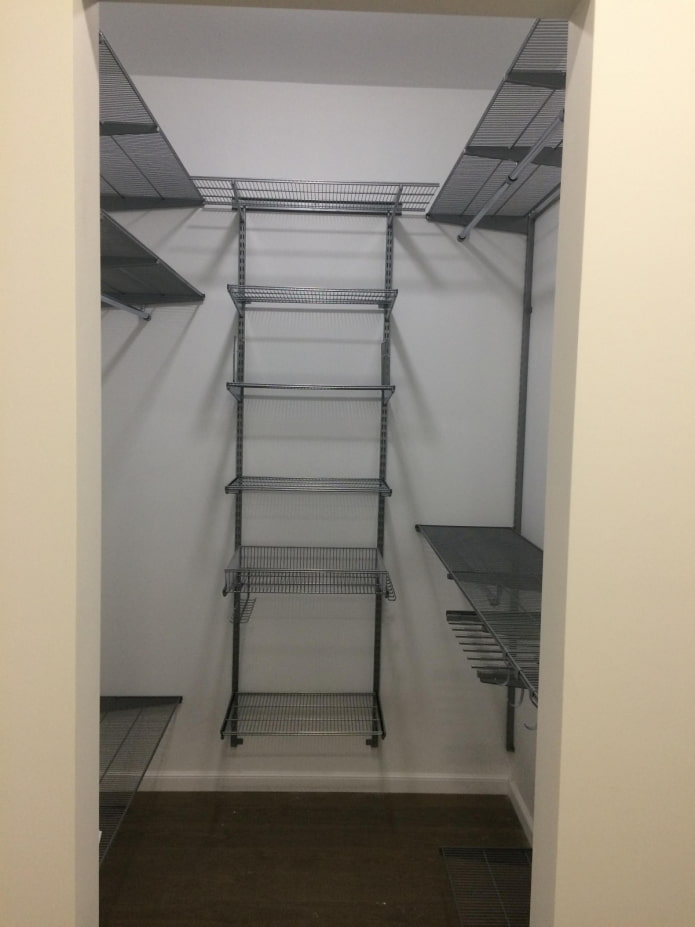

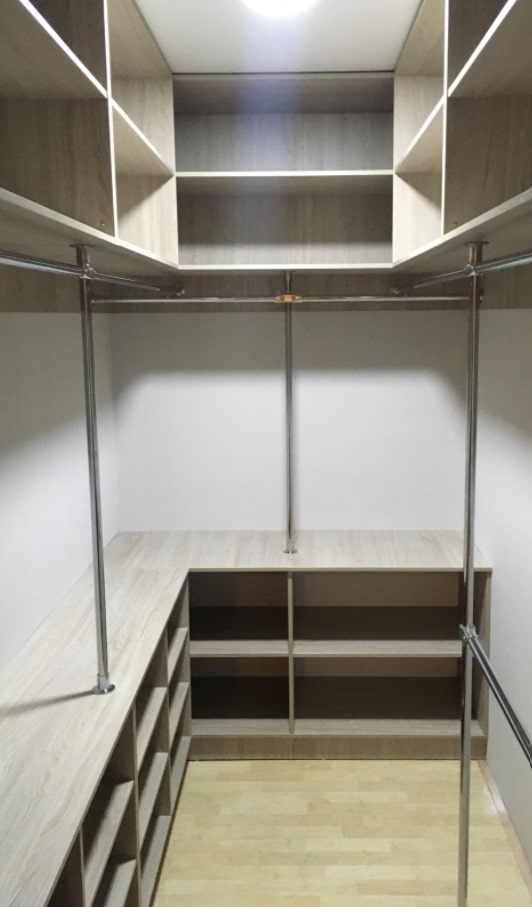
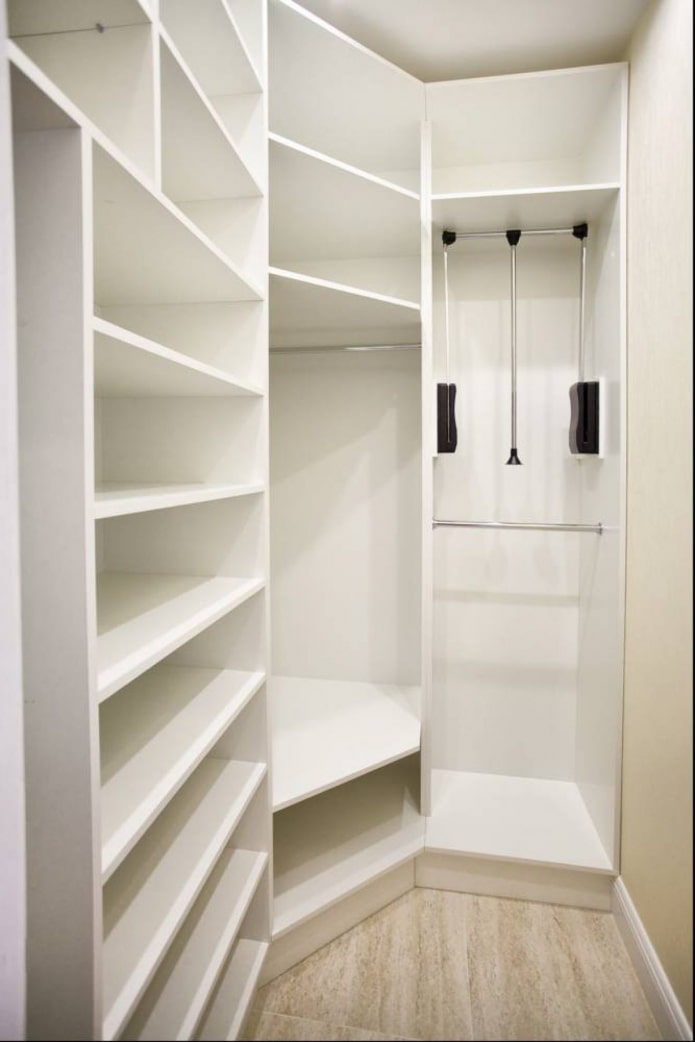

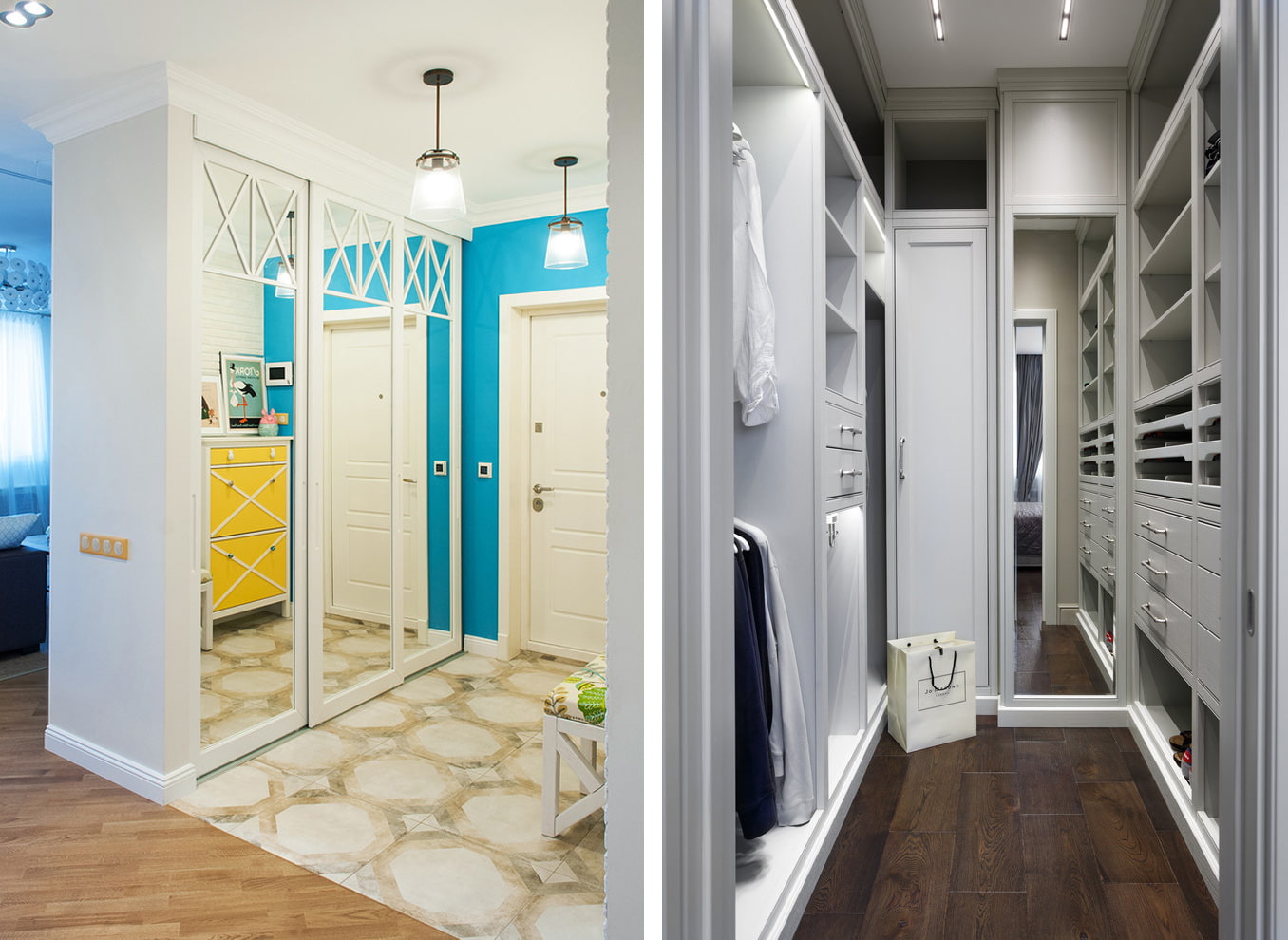
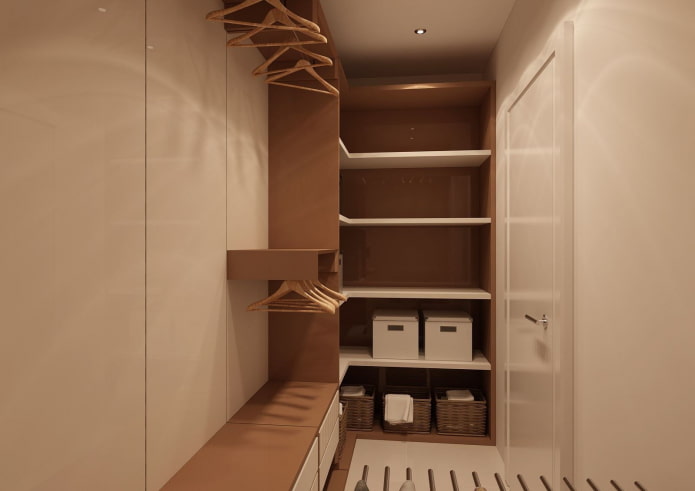
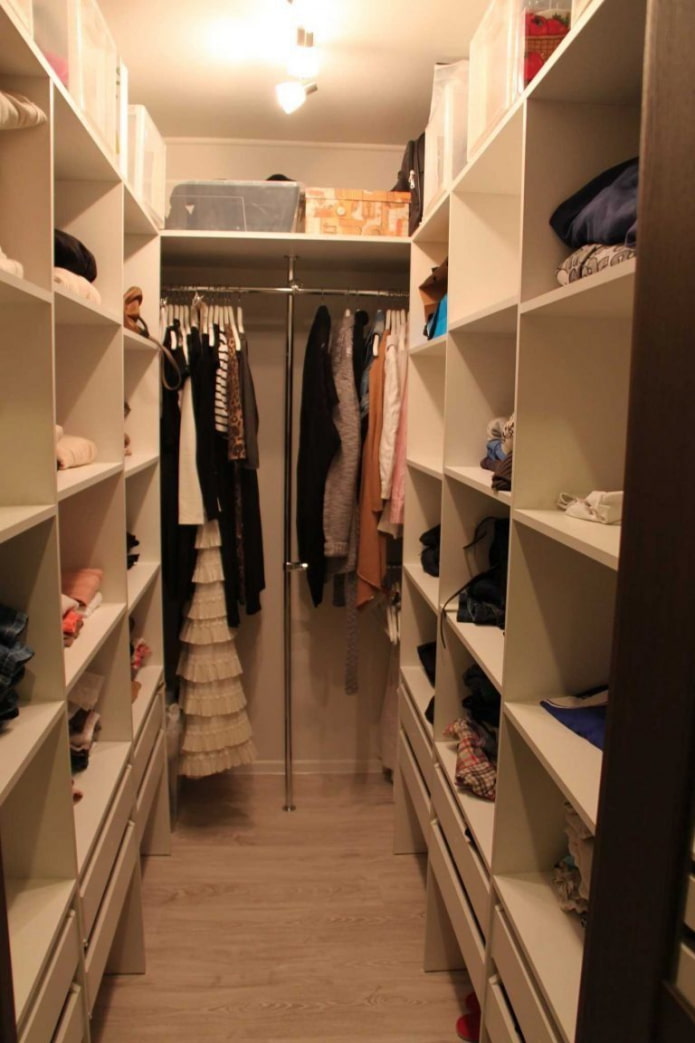
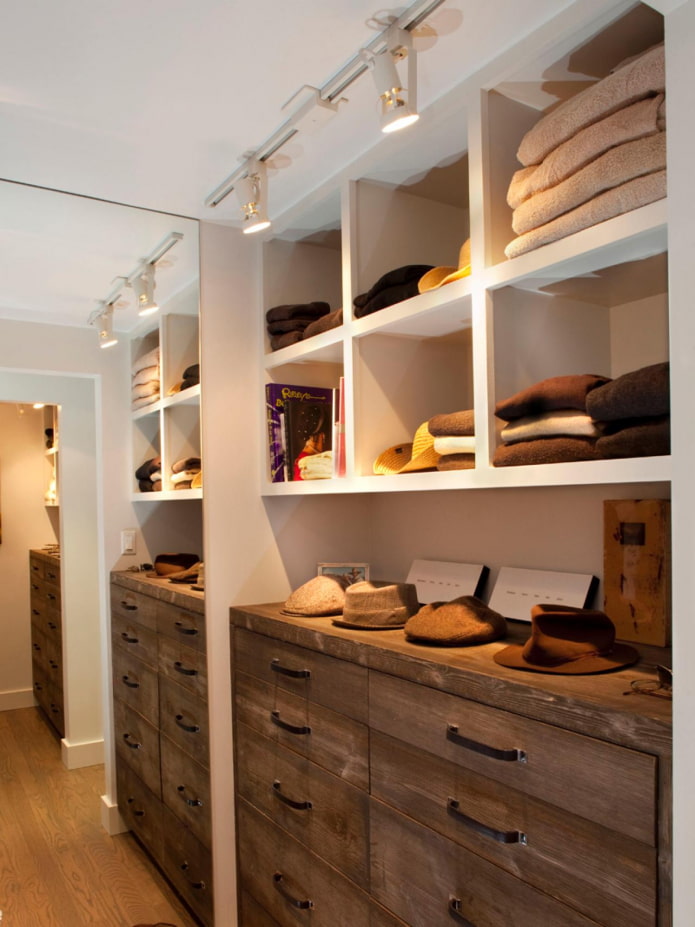
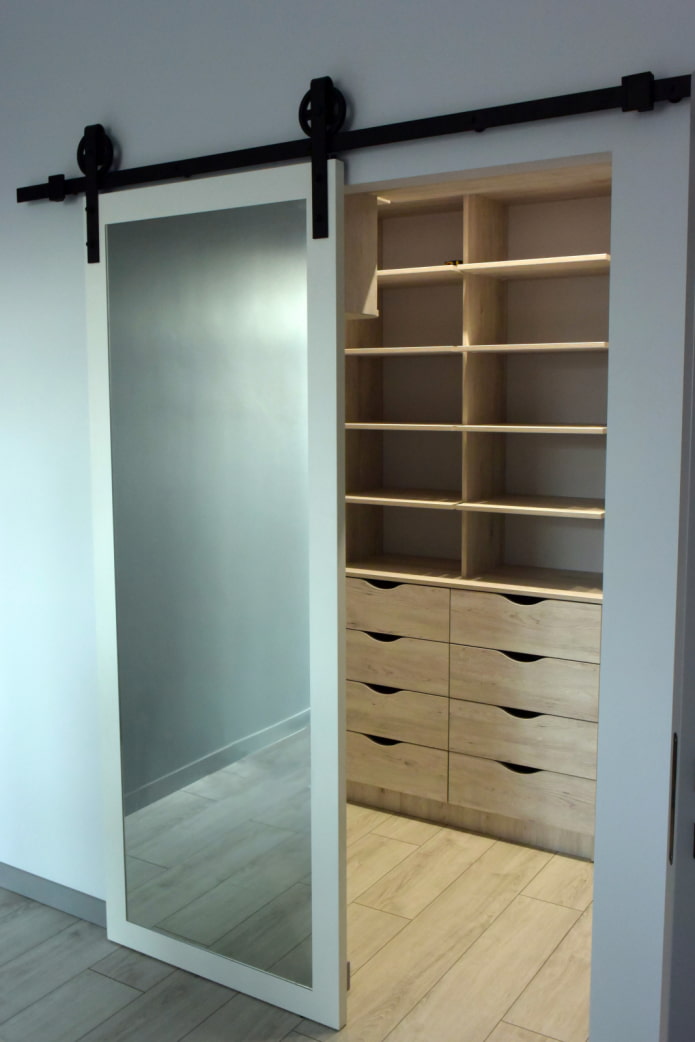
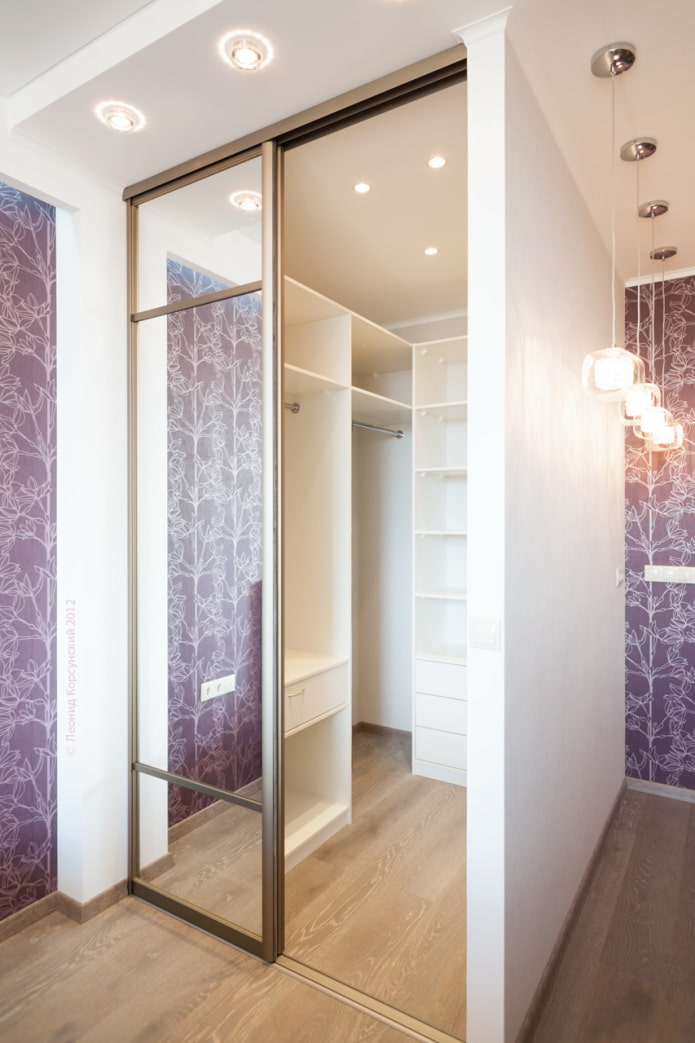
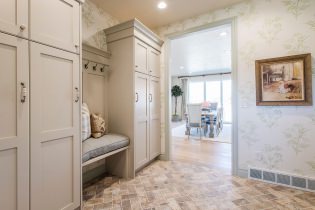 How to choose wallpaper for a small hallway: 70 design ideas
How to choose wallpaper for a small hallway: 70 design ideas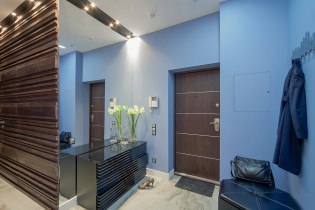 How beautiful to make a hallway in an apartment: design ideas, layout and arrangement
How beautiful to make a hallway in an apartment: design ideas, layout and arrangement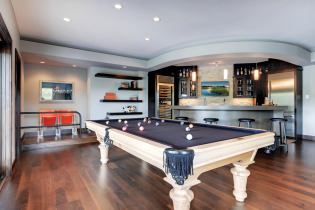 Billiard room interior in the house: design rules, photo
Billiard room interior in the house: design rules, photo Hallway design in white
Hallway design in white The most beautiful swimming pools in the world
The most beautiful swimming pools in the world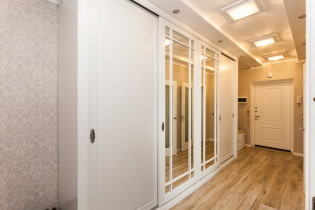 How to choose a wardrobe in the hallway?
How to choose a wardrobe in the hallway?